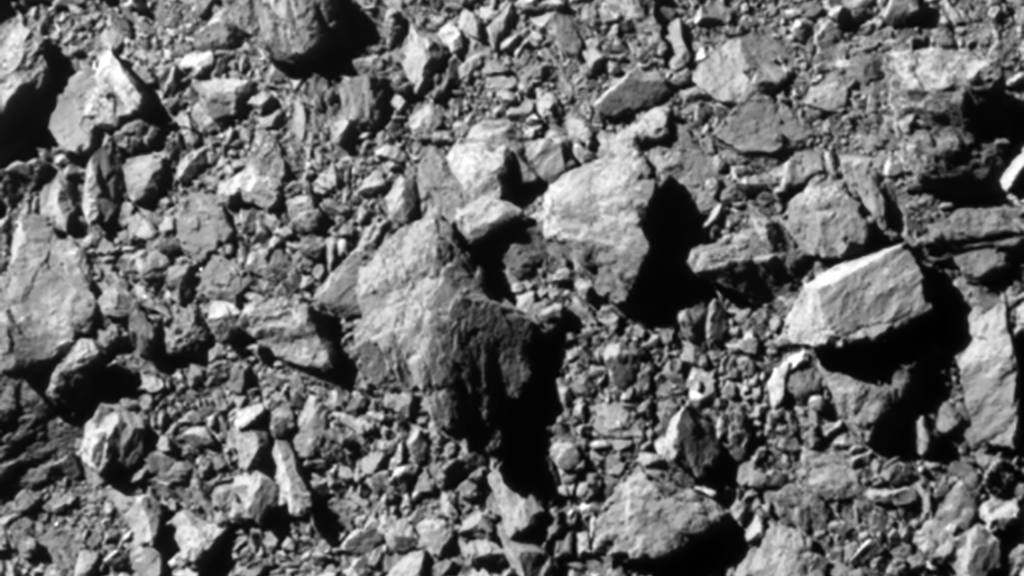On September 26, 2022, at 23:14 UTC, NASA successfully navigated a spacecraft into a direct collision with an asteroid. The purpose of the mission was planetary defense. This was a test that we could alter the course of an asteroid. A resounding success, this mission proved that we have the technology to redirect a potentially hazardous asteroid away from an impact with Earth. Earthlings have come a long way since the days of the dinosaurs!
DART was launched on November 24, 2021 aboard a SpaceX Falcon 9 rocket. As seen in the animation below. DART tracked very closely with the Earth despite it's 10 month journey in space. As the target asteroid approached, DART was continually steered by onboard navigation into a direct hit. This target is classified as a potentially hazardous asteroid. It does have an Earth-crossing orbit though is not predicted to threaten the Earth (at least in the immediate future). This makes it a decent candidate for this test as it would be a fairly realistic flight plan for such a mission. Coincidentally, it also is potentially hazardous to Mars.

DART hit Dimorphos at a relative speed of around 15,000 mph (24,000 kph) in a head-on collision, or opposite to its orbital direction. That's 4.1 miles per second.
...Poor Dimorphos.
This speed combined with the spacecraft's mass of 1,100 lbs (500 kg), released the equivalent energy of over 3 tons of TNT. This energy was expected to slow down Dimorphos and effectively shorten its orbit around Didymos. On Octover 11, 2022 NASA published the initial results that validated the orbit (originally around 12 hours) was decreased by 32 minutes.
There was always a bit of uncertainty about how solid Dimorphos actually was and what would be tossed up into space from this impact. To have a look we trained many telescopes on this system during and after the event. Myself included!
In an effort to see what I could detect of this impact, I pointed to Dimorphos on the morning of October 9, 2022. This was almost two full weeks after the DART impact. I tracked the asteroid for almost 2 hours as it moved against the background sky. What did I see? Humanity made a comet! The mechanism may be different, but it sure looks like one. Dimorphos has an ejecta tail extending 3-4 arc-minutes away. It is exceedingly faint but visible. With some quick references and trigonometry, this is somewhere around 10-15,000 km or roughly the diameter of Earth. This is obviously only what I can detect from my backyard, but I was astonished to see the "impact" of man in space, through my telescope. Satellites are common to see, but a dust plume is something else entirely.
Here is my picture, presented with comet processing, stacking and overlaying two separate images, one stabilized on the asteroid and one stabilized on the stars. This allows us to see crisp detail on both.

This essentially confirms that humanity is more than capable, with current technology, of diverting an Earth-threatening asteroid. We currently have the detection capability to monitor asteroids of hazardous size, and we now have the deflection capability demonstrated. Congratulations to humanity for leveling-up on planetary defense!
I put together a video sequence of my capture and some processing, viewable in this Instagram Reel ...
To kick up the visual interest, I processed this data in a second fashion. For this version, I let the colorful star field drift through the background and stabilized my stacking on Dimorphos. By some clever luminance layering I was able to enhance the brightness of the tail. I ended up being limited by the quality of my data here, as the encroaching sunrise, light pollution, and low altitude of the target began to conspire against me. The tail appears to wag a bit. While I wouldn't necessarily be surprised if this were the case (binary system, orbiting and rotating target asteroid) I will require further research into my data to validate this. All in all, though, I thought this was an interesting take ... if not a little more artsy. I hope you like it.

This is a big step forward for humanity, now we just need to ensure the biggest threat to long term survival isn't ourselves ... peace and enjoy!
Interested in prints of this milestone event? Click here for the traditional shot and click here for the vertical star trails version.
Cheers,
Jason
Technical detail:
Celestron EdgeHD 8”
Celestron .7x Reducer
Moonlite 2.5” CHL
ZWO ASI1600MM
Orion AtlasPro
LRGB
Dimorphos exposures
Lum: 156x30s
RGB captured at the end of sequence
Approximately 1.5 hours elapsed time
No dithering to limit interframe settling. Several missing frames due to refocusing the telescope.
Oh, and where is Didymos currently (as of October 2022)? Below Orion's feet!


